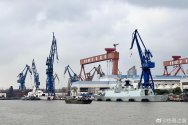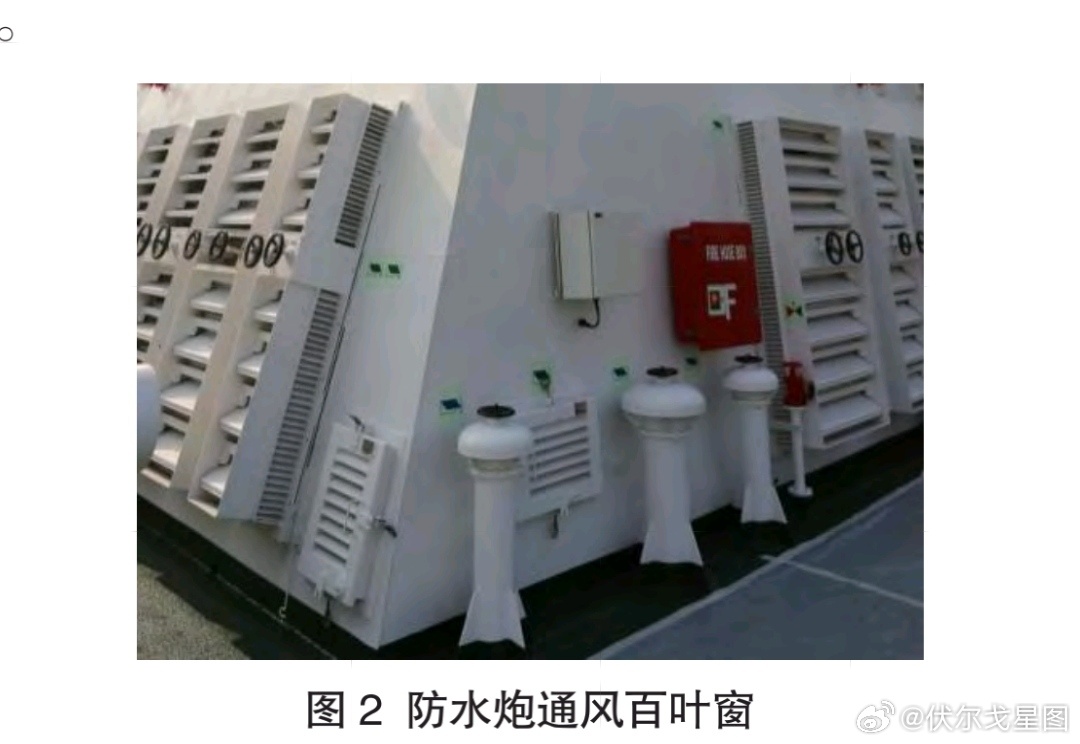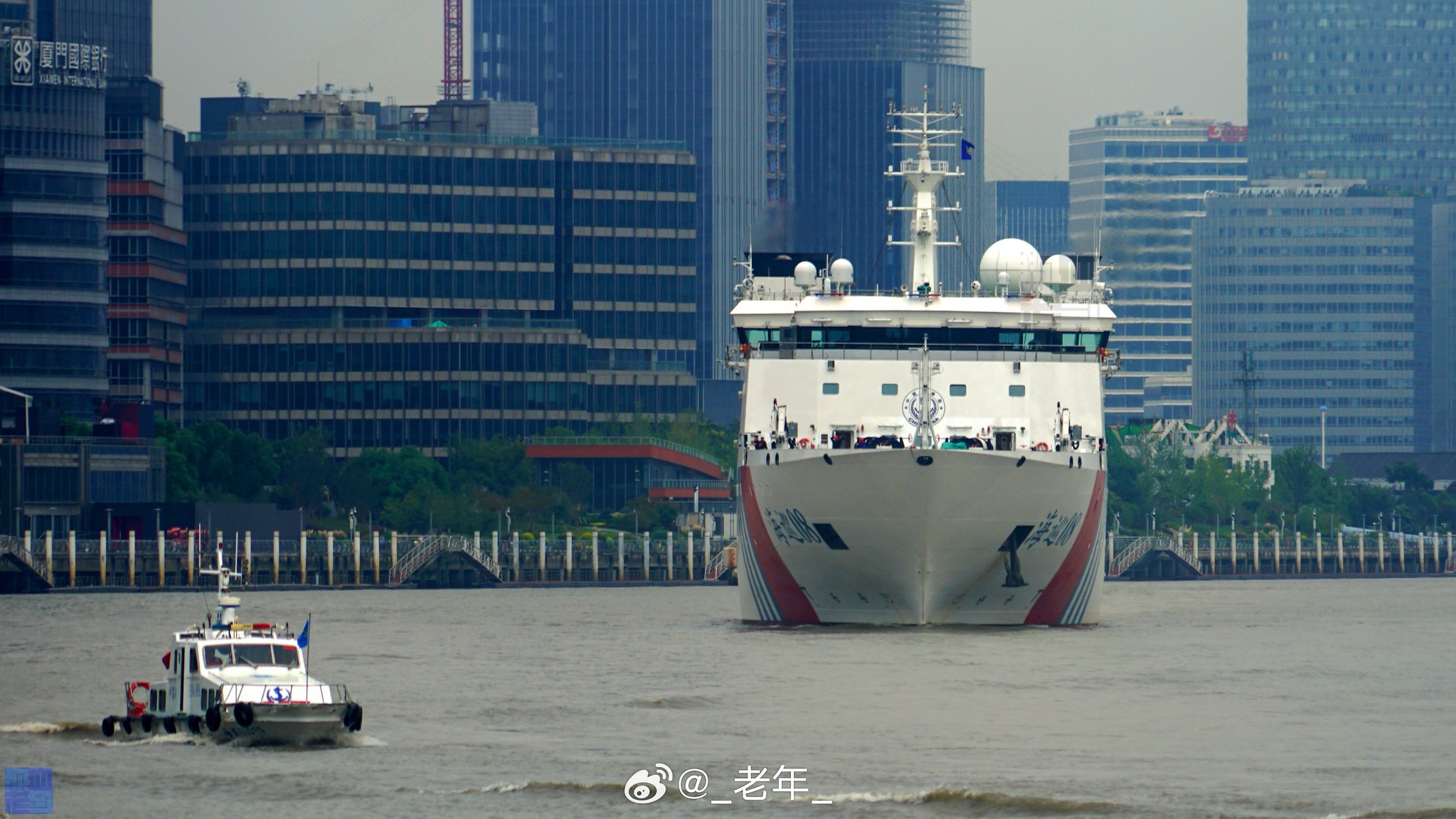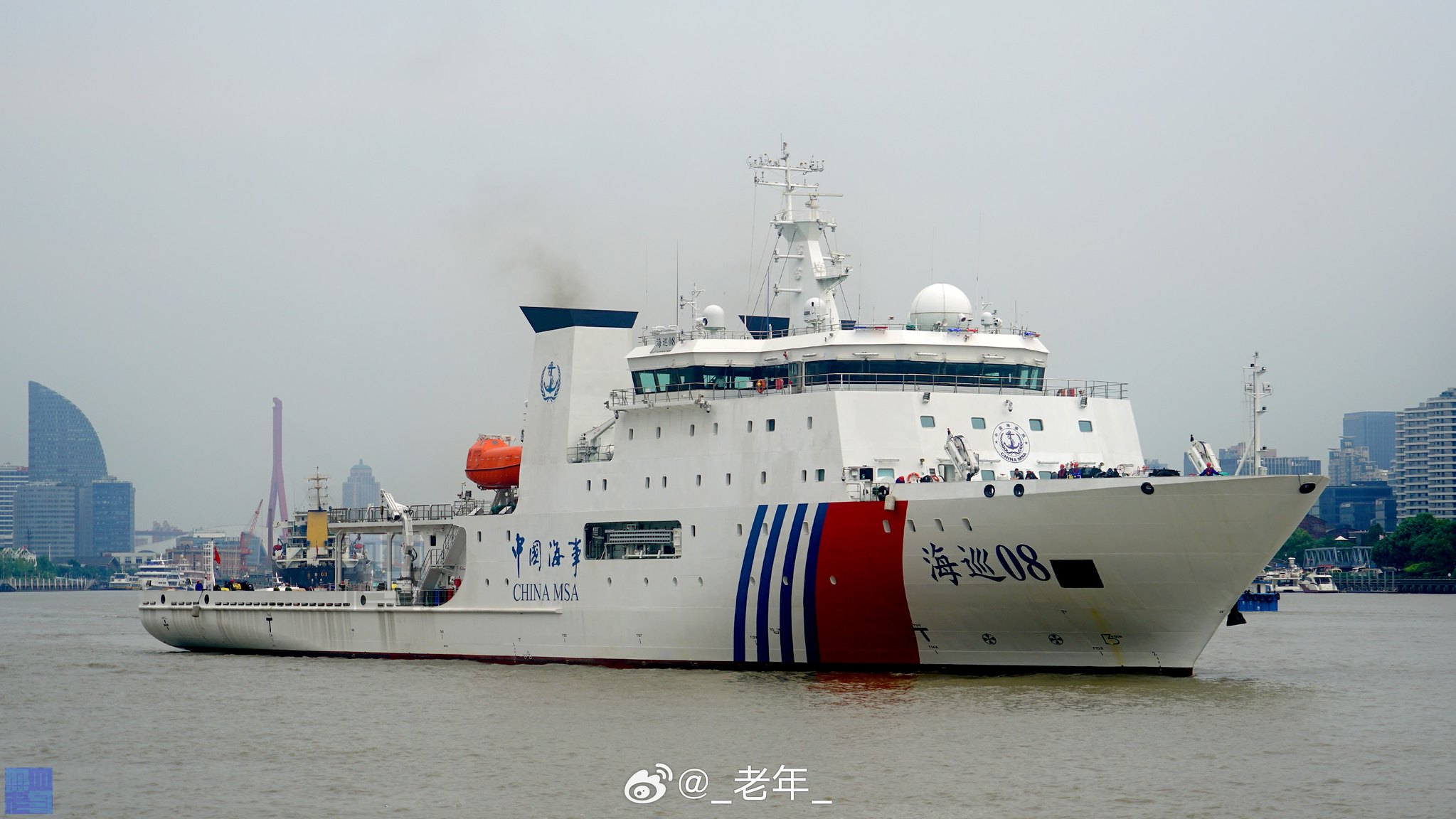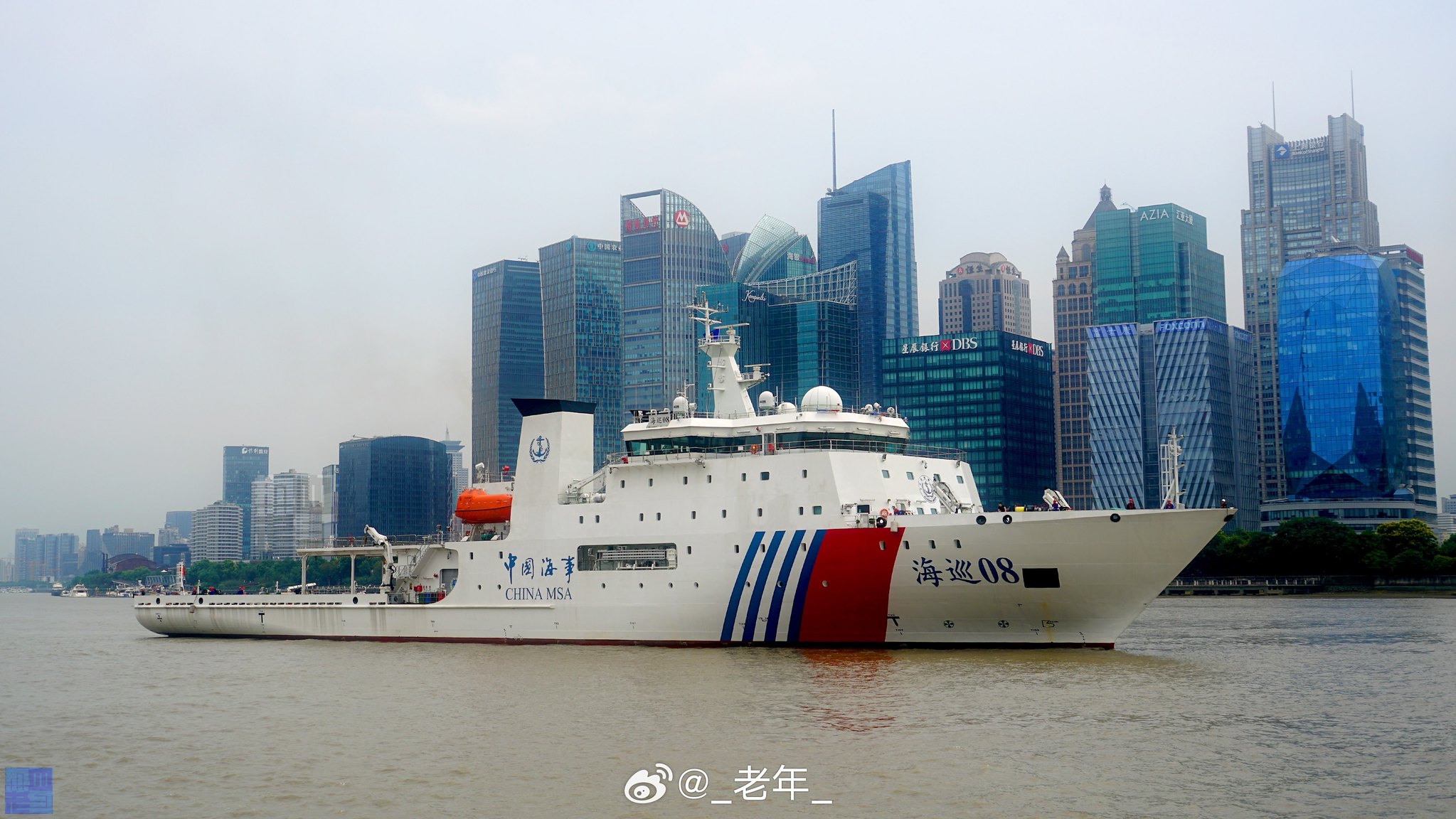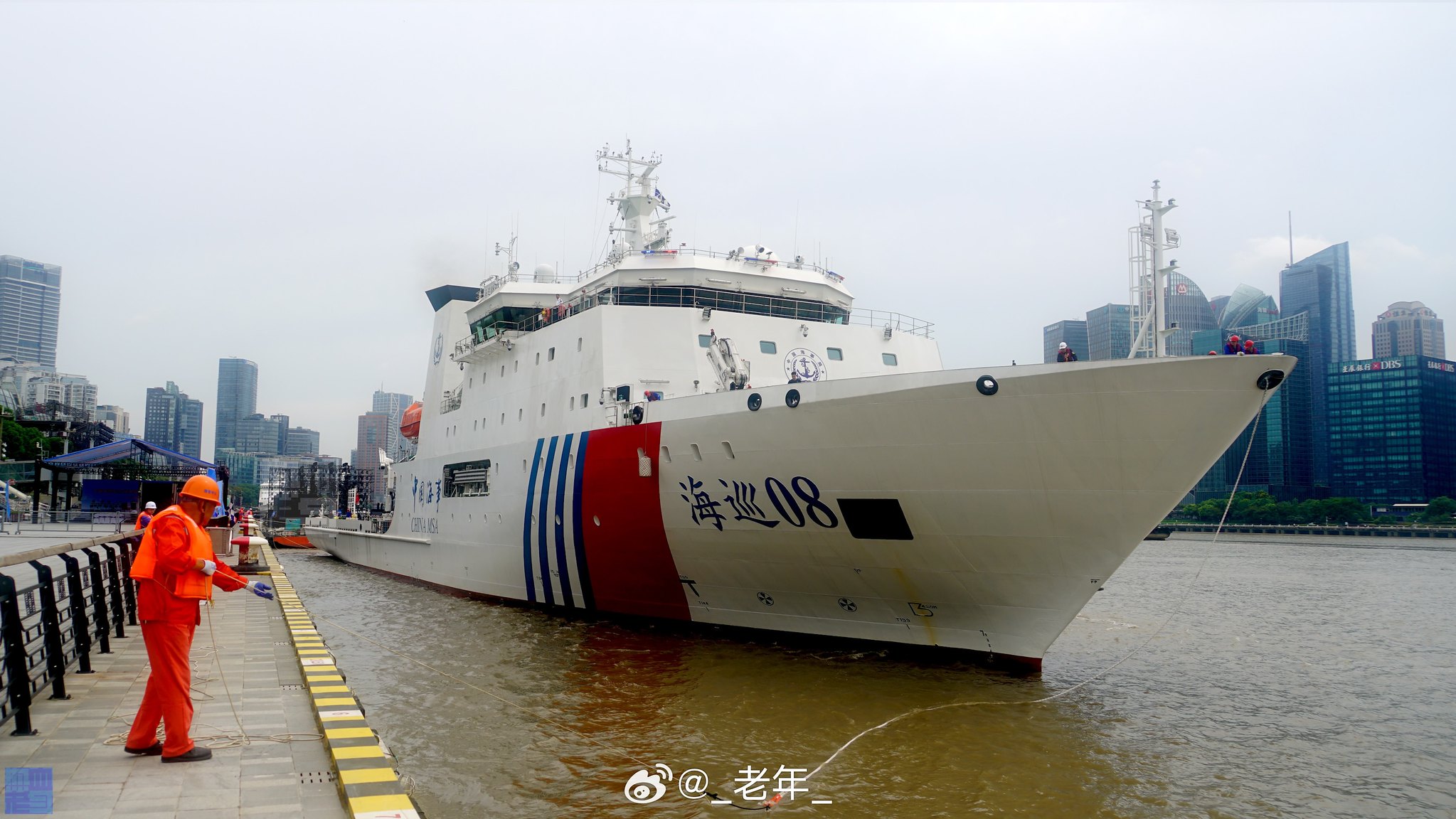Not Coast Guard, but MSA.
Published: 9:00am, 13 Jun, 2023 Updated: 9:00am, 13 Jun, 2023
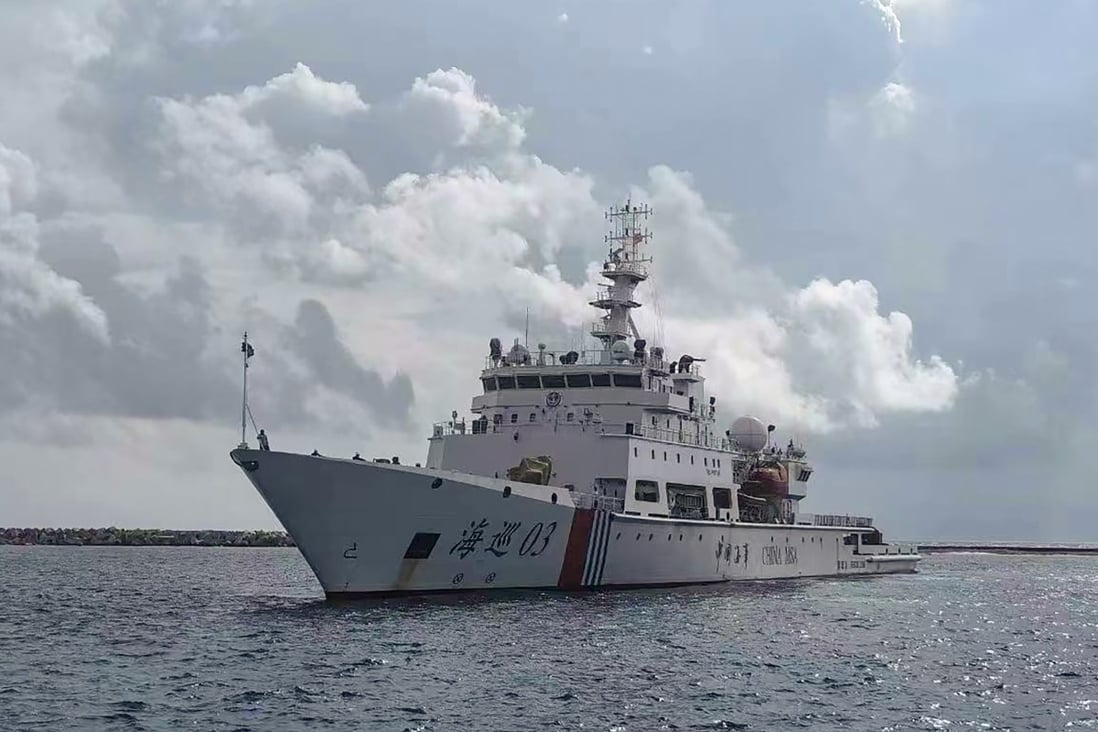
The Haixun 03 was launched in 2021 and went into service last year. Photo: CCTV Weibo
China has sent its maritime patrol ship the to the disputed Paracel Islands in the to bolster its claims to the area.
The vessel arrived on Sunday at Woody Island, known as Yongxing Island in Chinese, and will patrol the surrounding waters until early July, Chinese state media reported on Monday.
The assignment comes as South China Sea claimant countries are scrambling to reinforce their claims before a for activities in the waters is finalised.
The second text reading for the legally-binding document is hoped to be completed within this year.
China has established military bases and civilian settlements in , known as the Xisha in China, but the US Navy also sails frequently through the waters on what it calls freedom of navigation operations.
The Haixun is operated by the Hainan Maritime Safety Administration (MSA) and its crew is tasked with inspecting the navigation route, telecommunication and lighthouse equipment, beacons, buoys and other navigational facilities.
They will also check the radio response and automatic identification system of ships in the area, and crack down on illegal ship operations and sea pollution, state news agency Xinhua reported.
“The officials will also carry out surveys on relevant islands together with personnel who are based there,” the report said.
“They will assess maritime safety work, emergency rescue, typhoon shelters, navigation conditions and collect extensive first-hand information in and around the islands, to lay a solid foundation for safe transport in the South China Sea.”
China claims almost the entire resource-rich South China Sea and established the municipality of Sansha on Woody Island in 2012 to administer China’s territorial claim.
China gained control of the island after a brief war with South Vietnam in 1974.
Other South China Sea claimants include the Philippines, Malaysia, Brunei and Taiwan, with each of them occupying some islands and reefs.
This is the first such mission by the Haixun 03, China’s biggest ocean patrol ship, which was launched in 2021 and entered service last year.
The 128.6-metre-long (42 feet), 16-metre-wide vessel has a design speed of 20 knots and a range of around 10,000 nautical miles. It can patrol for 60 days without resupply.
The ship has a maritime data centre equipped with advanced integrated monitoring systems, according to state media reports. It can also carry multiple helicopters, according to its designer.
The MSA’s patrol fleet, which focuses on maritime safety, runs in parallel to the paramilitary China Coast Guard, which is responsible for general law enforcement.
Beijing favours using “non-military” units such as the MSA and the coastguard to deal with rival claimants, leaving the People’s Liberation Army to handle the US Navy.
However, the MSA and coastguard vessels are more than capable of confronting Southeast Asian neighbours’ warships.
China sends new patrol ship Haixun 03 on South China Sea mission
- The vessel arrived at Woody Island on Sunday and will carry out various inspection tasks in the waters
- The Haixun was launched in 2021 and went into service last year
Published: 9:00am, 13 Jun, 2023 Updated: 9:00am, 13 Jun, 2023

The Haixun 03 was launched in 2021 and went into service last year. Photo: CCTV Weibo
China has sent its maritime patrol ship the to the disputed Paracel Islands in the to bolster its claims to the area.
The vessel arrived on Sunday at Woody Island, known as Yongxing Island in Chinese, and will patrol the surrounding waters until early July, Chinese state media reported on Monday.
The assignment comes as South China Sea claimant countries are scrambling to reinforce their claims before a for activities in the waters is finalised.
The second text reading for the legally-binding document is hoped to be completed within this year.
China has established military bases and civilian settlements in , known as the Xisha in China, but the US Navy also sails frequently through the waters on what it calls freedom of navigation operations.
The Haixun is operated by the Hainan Maritime Safety Administration (MSA) and its crew is tasked with inspecting the navigation route, telecommunication and lighthouse equipment, beacons, buoys and other navigational facilities.
They will also check the radio response and automatic identification system of ships in the area, and crack down on illegal ship operations and sea pollution, state news agency Xinhua reported.
“The officials will also carry out surveys on relevant islands together with personnel who are based there,” the report said.
“They will assess maritime safety work, emergency rescue, typhoon shelters, navigation conditions and collect extensive first-hand information in and around the islands, to lay a solid foundation for safe transport in the South China Sea.”
China claims almost the entire resource-rich South China Sea and established the municipality of Sansha on Woody Island in 2012 to administer China’s territorial claim.
China gained control of the island after a brief war with South Vietnam in 1974.
Other South China Sea claimants include the Philippines, Malaysia, Brunei and Taiwan, with each of them occupying some islands and reefs.
This is the first such mission by the Haixun 03, China’s biggest ocean patrol ship, which was launched in 2021 and entered service last year.
The 128.6-metre-long (42 feet), 16-metre-wide vessel has a design speed of 20 knots and a range of around 10,000 nautical miles. It can patrol for 60 days without resupply.
The ship has a maritime data centre equipped with advanced integrated monitoring systems, according to state media reports. It can also carry multiple helicopters, according to its designer.
The MSA’s patrol fleet, which focuses on maritime safety, runs in parallel to the paramilitary China Coast Guard, which is responsible for general law enforcement.
Beijing favours using “non-military” units such as the MSA and the coastguard to deal with rival claimants, leaving the People’s Liberation Army to handle the US Navy.
However, the MSA and coastguard vessels are more than capable of confronting Southeast Asian neighbours’ warships.

